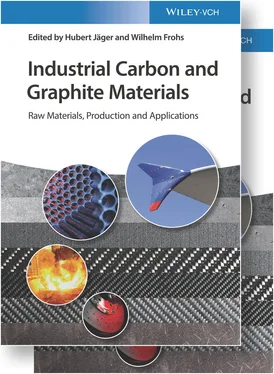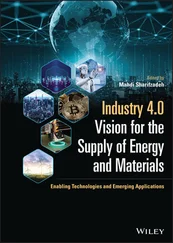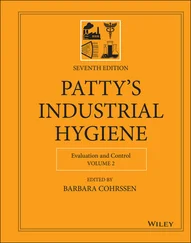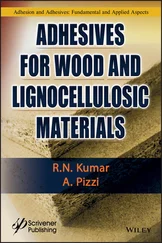6.1.3.2. Physical and Chemical Properties
6.1.3.2.1 Physical Properties
PC is blocky, granular, and powdery in shape and black in color and is a porous carbonaceous solid with very little impurities (in general, ash is in a range of <3%). Its appearance depends on a production method and applications. The majority of PC produced using the chamber‐type coke oven is blocky, very hard, and in a shape like a columnar joint or a shape in which the bottom of a cone is protruded convexly. There are pores and cracks elongated in the direction of the major axis and parts of PC appear in silver gray color. There are two types of PC produced by the delayed coking process, needle coke used for a synthetic graphite electrode in electric arc furnace steelmaking and amorphous coke used in aluminum smelting. Needle coke is black and shiny in silver gray color and characterized with the elongated structure with the sharp tip at both ends. Pores and cracks with the cross section in a range of a few millimeters are observed mainly in the direction of the major axis. Amorphous coke is black in color and has the shape close to the rectangular parallelepiped or cube structure with rounded edges or the shape close to the sphere, and pores with the maximum cross section in a range of a few millimeters are observed randomly. The grain size of coke produced by the delayed coking process ranges from a size of fine powder to the dimension of a golf ball as the maximum diameter.
Needle coke is heat‐processed at 2000–3000 °C to convert to the majority of a synthetic graphite electrode and special carbon products as a products, but different cokes are used depending on the degree of graphitization according to the purpose. Coke used in aluminum smelting is used as a carbonaceous substance. Each property differs substantially (see the Section 6.1.3.2.2).
6.1.3.2.2 Chemical Properties
Volatile matter (VM) of PC is around approximately 0.3%, and its ash content is around 0.3% at maximum, whereas in needle coke the ash content generally does not reach to approximately 0.1%. The real density (RD) depends on its application, and it is mostly in a range of 2.13–2.15 in needle coke and mostly in the vicinity of 2.00 in amorphous coke and is adjusted with the calcination temperature in production.
The content of elements in PC is varied with the calcination temperature in production but is generally given as follows. The carbon content is approximately 98% or more in amorphous coke and is further increased in needle coke in which the calcination temperature is higher. The hydrogen content is below approximately 0.5%. The sulfur content is around 0.3% and its value in needle coke is slightly smaller than that in petroleum coke. The nitrogen content is around 0.5–0.8%, and its value in needle coke is higher than that in petroleum coke, and nitrogen is assumed to be the causative agent for an irreversible expansion (puffing) generated in graphitization in the production process of a synthetic graphite electrode. In metal elements as an impurity, the content of V, Ni, and Ti is less in needle coke than that in petroleum coke (see the Chapter 6.1.2).
PC contains little metal impurities and is low in VM so that there is no report specified on the environmental impacts and risks (see Section 6.1.3.5).
6.1.3.3. Production of Pitch Coke
Coal tar used as a raw material for PC is obtained by the dry distillation of coal and produced as a by‐product in the production of metallurgical coke used mainly in steelmaking and in the production of town gas. Useful application of coal tar is important for supporting the steel industries and fuel gas industries.
Production status based on data in 2009 is approximately as follows. In addition to use coal tar generated as a fuel, approximately 16 000 000 t of coal tar is fractionally distilled to produce the naphthalenes, tar acids, tar bases, creosote oil, and soft coal‐tar pitch (boiling point: 300 °C or more). The soft coal‐tar pitch is further distilled to raise the softening point to produce medium pitch (softening point: 60–80 °C) and hard pitch (softening point: higher than 80 °C). The ratio of each product produced is 10% for naphthalenes, 5% for tar acids, 5% for tar bases, 30% for creosote oil, and 50% for coal‐tar pitch including medium and hard pitches. Approximately 90% of pitch produced is used as an anode material for aluminum smelting, a synthetic graphite electrode for steelmaking, or a binder pitch for various carbon products. Remaining 10% of soft pitch (SOP) is used as a raw material for the thermal decomposition polycondensation reaction (carbonization) to produce both PC and creosote oil. The ratio of each product in production of PC is 10% for naphthalenes, 5% for tar acids, 5% for tar bases, 40% for creosote oil, and 40% for PC. The annual production volume of PC is estimated to be approximately 900 000 t.
Production sites and production process of PC are given in Table 6.1.3.1. An actual output of PC (estimated in 2009) in each region is estimated to be from 400 000 to 500 000 t/year in China, 280 000 t/year in Japan, 110 000 t/year in South Africa, and 50 000–100 000 t/year in Eastern Europe. Production of PC is particularly grown in China as the center where extensive economic development is under way.
6.1.3.3.1 Production Process
The production process is roughly divided into two types, the delayed coker and calciner process and the chamber coking process. A main production process is the delayed coker and calciner process, and the chamber coking process is used mainly in Eastern Europe and in China. (See the Section 6.1.3.1)
Table 6.1.3.1 Production of pitch coke.
| Region |
Company |
Production process |
Grade |
Capacity |
Quantity |
| Europe |
|
Chamber |
A |
|
50–100 |
| Africa |
Sasol |
Delayed |
A |
|
110 |
| China |
Hongte Chemical Industry |
Delayed |
RE |
150 |
30 |
|
Anshan Iron and Steel |
Delayed |
RE |
80 |
20 |
|
Baoshan Iron & Steel |
Delayed |
RE |
50 |
10 |
|
|
Delayed |
A |
280 |
100–200 |
|
|
Chamber |
A |
|
350–450 |
|
Subtotal |
|
400–500 |
| Japan |
C‐Chem |
Delayed |
PR |
120 |
85 |
|
Mitsubishi Chemical |
Delayed |
PR |
90 |
60 |
|
|
Delayed |
A |
|
135 |
|
Subtotal |
280 |
280 |
| World |
|
Chamber |
|
450 |
|
|
Delayed |
670 |
450 |
|
|
Total |
|
900 |
6.1.3.3.1.1 Chamber Coking Process
Figure 6.1.3.1illustrates a flow chart of the process that in the Koppers process, air is injected to process SOP yielding hard pitch, which is charged into the chamber oven. Major equipment is constituted with a chamber‐type oven similar to the metallurgical coke oven as central equipment, a raw material feeding machine to a chamber oven, a pusher machine for discharging PC formed in the chamber oven, a quench car for cooling red hot PC pushed, a crusher for adjusting the grain size of PC, and equipment for processing oil and gas formed as by‐products. When hard pitch in the residual carbon content left as a coal after processing a raw material is charged into the chamber oven, equipment of preprocessing the pitch is available. Pitch is charged from the top of the chamber oven to produce by dry distillation carbonaceous PC free of ash. Table 6.1.3.2[5, 6, p. 316] indicates a typical example of the major dimensions of the chamber oven and its operational capacity. The oven is slightly smaller in size than the coke oven, and a battery of ovens is composed of around five ovens much less than the coke ovens battery in which a few dozens of ovens are used. This is due to the very severe operational condition under which pitch is charged as a raw material so that the service life of the oven is short and around five years. The overall height of the oven is around 8 m, and the upper half of the oven is configured alternatively with the carbonization chamber and the gas combustion chamber in the width direction of the oven. The lower half of the oven is configured with the regenerative chamber for exchanging heat between the hot flue gas in the combustion chamber and the combustion air.
Читать дальше












